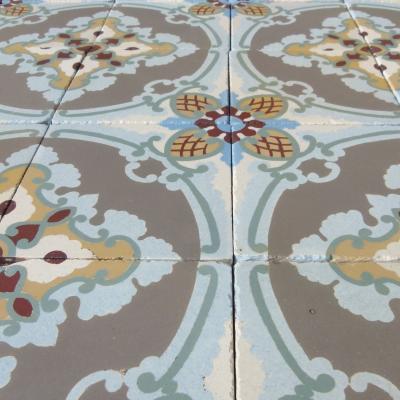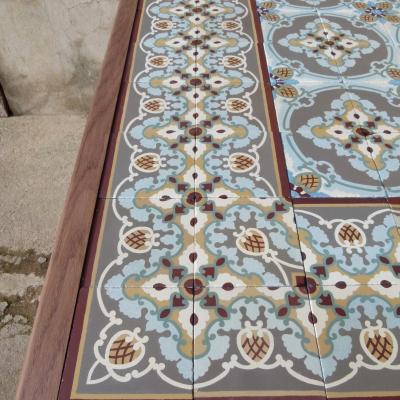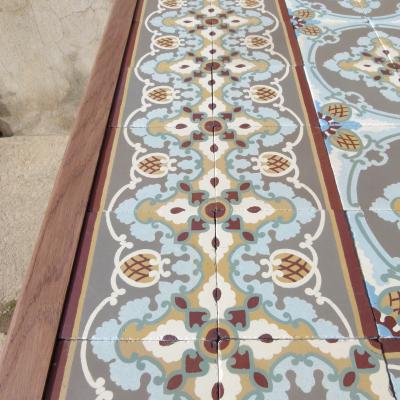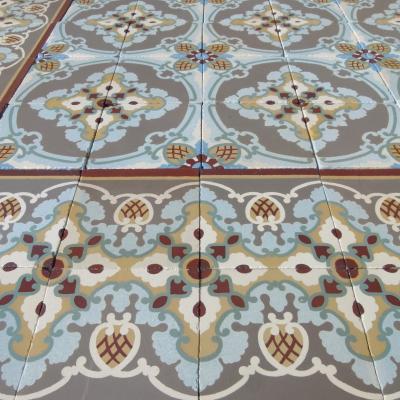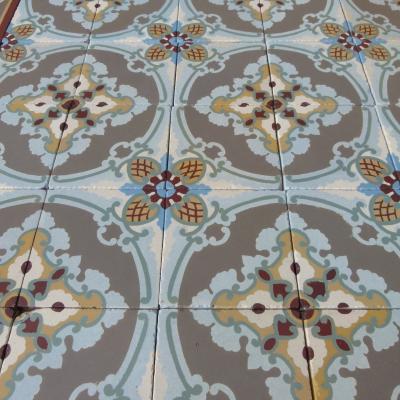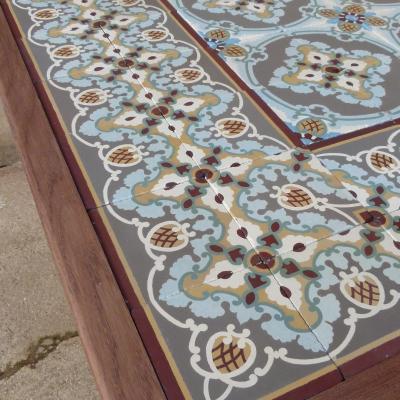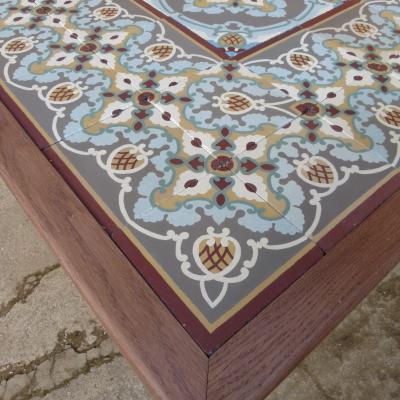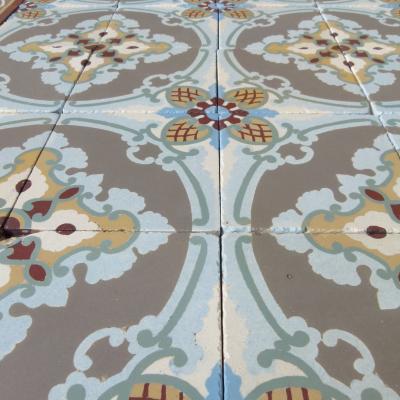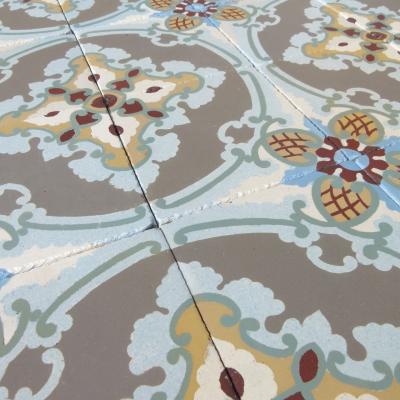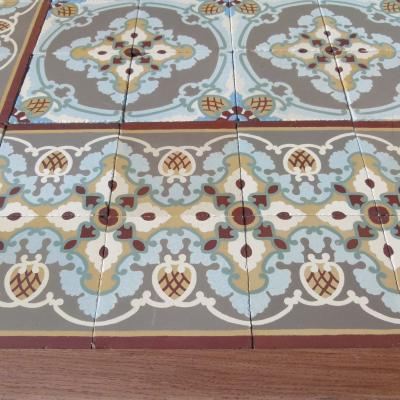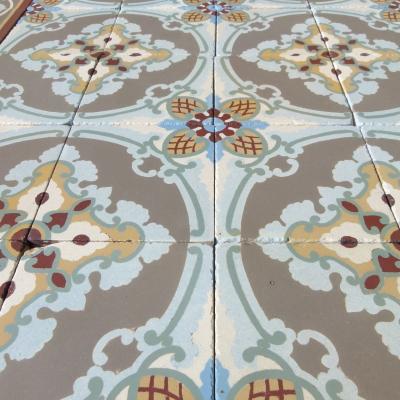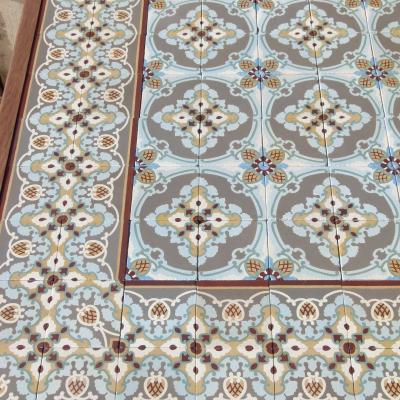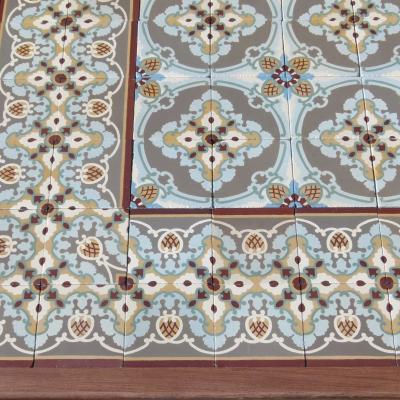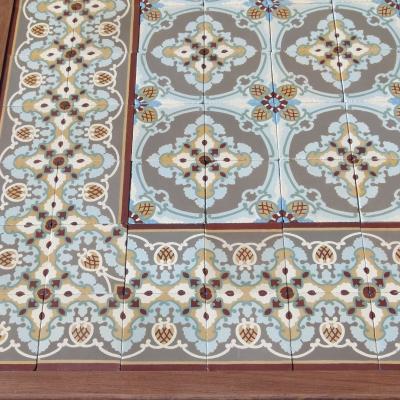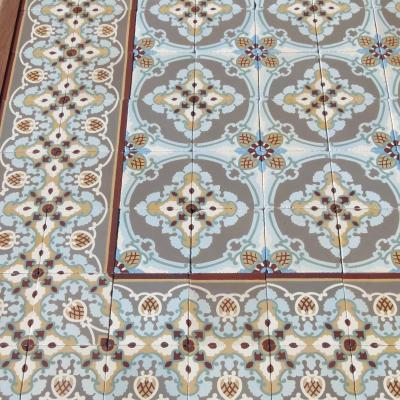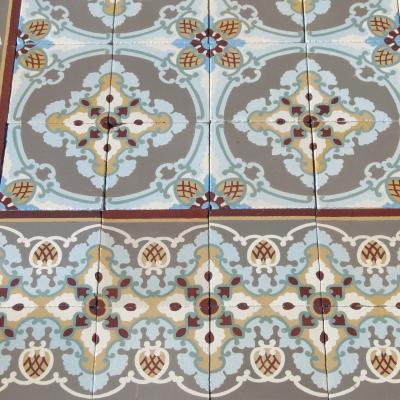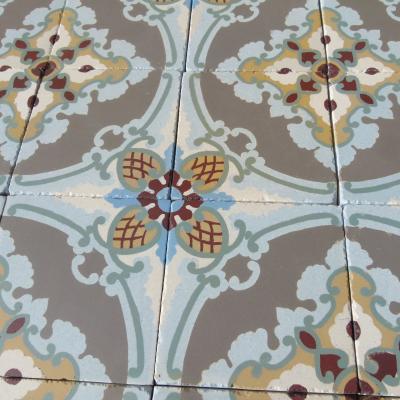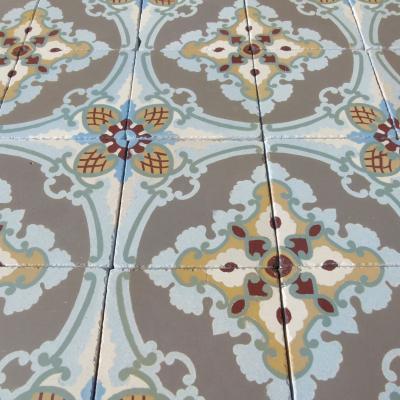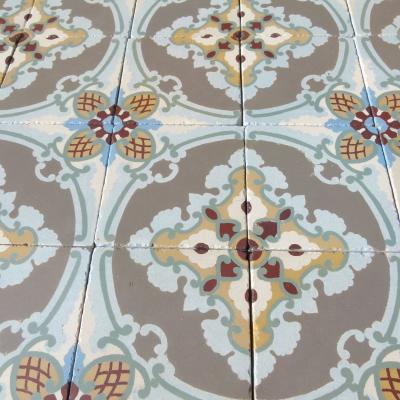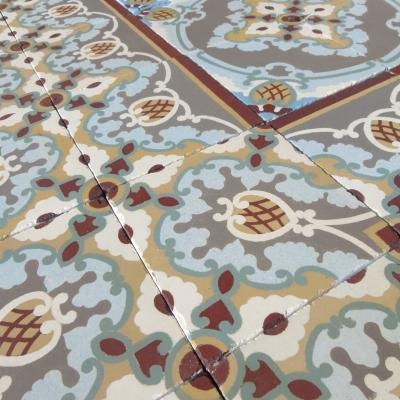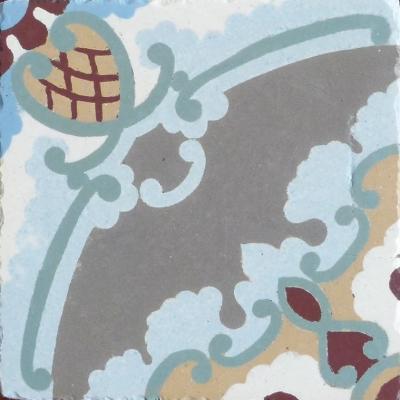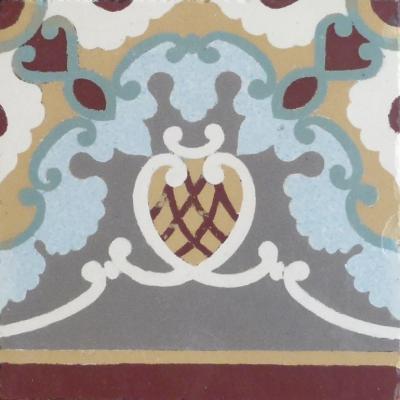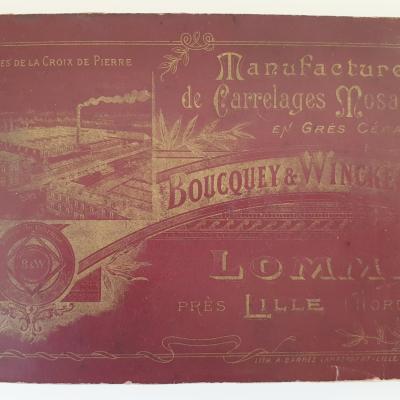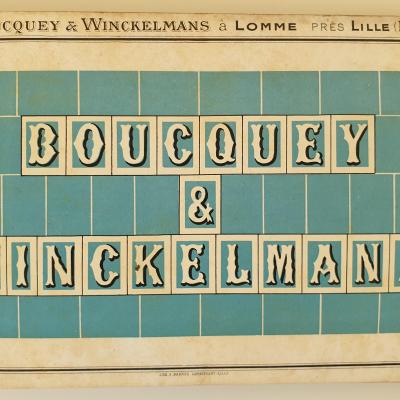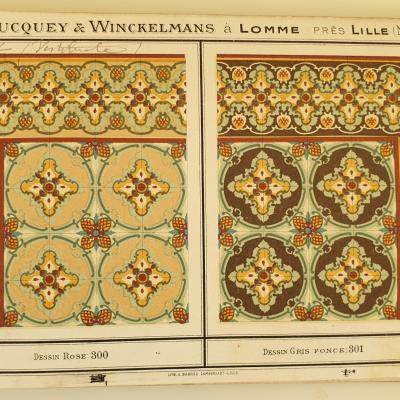A large 18m2 / 194 sq ft French ceramic floor with back to back borders c.1920-1930
A beautifully ornate antique French ceramic floor consisting of a principal field tile and its same size borders, laid in duplicate, back to back. The floor has a beautiful antique patina, as the high resolution photographs show, with some tiles displaying edge nibbles or on a very small number of tiles the ocassional small chip, all groutable.
The floor was produced in the 1920's by Manufacture de Carrelages Mosaiques Boucquey et Winckelmans, Usine de la Croix Pierre, Lomme, Pres de Lille, NORD. During the 1920's the company was a joint venture although Winckelmans are still trading to this day, being one of the few heritage French tile producers to still be.
These 15cm sq tiles, c.15mm thick, are made from Gres Cerame (stoneware). The total surface area of the floor is 18m2/194 sq ft.
Displayed in the gallery, alongside scans from the period Boucquey and Winckelmans catalogue presenting the tiles, are photographs of a 1m2+ randomly selected section of the floor which reveal a quality ceramic with crisp and vibrant colours. Alongside this floor, shown on the right of the B&W catalogue page, are the same tiles but in a predominantly pink palette. We have reclaimed a small surface area of this floor from the same house close to Cambrai in the north of France and, given their identical design, it may present options for use in another area with this larger floor. More details and photographs of the smaller floor can be found by clicking here
For the eagle-eyed amongst you, please note that we have laid the internal border corner tile in the photographs at the wrong angle! Our apologies. See the original B&W catalogue page scan in the photo gallery for the correct positioning.
Tile quantities by tile type:-
Field tiles - 545 - 12.3m2 / 132 sq ft.
Border tiles - 250 with all 8 internal and external border corners - 5.8m2 / 62.5 sq ft*
*19.4 linear metres / 63.5 linear feet when laid back to back in duplicate. Double the linear lengths if the borders are to be single laid.
NOTE:-
Antique tiles were most commonly made in single or two tile moulds. Before current computer automation methods their moulds were made my hand and the colour slips mixed by eye. Kiln temperatures could also be variable, as could the firing time. The result is that often tiles display subtle size and thickness variations and there can be tonal variations in colours, owing to the slip mixing and/or firing time. All of this makes these handmade tiles unique and adds to their charm. Some floors display their subtle variations in size and tones, some not, but when photographing we always take a random section of the floor so that it is representative of the whole. A tiler should always dry lay a section of the tiles to familiarise himself with them before starting to fix lay.
CE291



